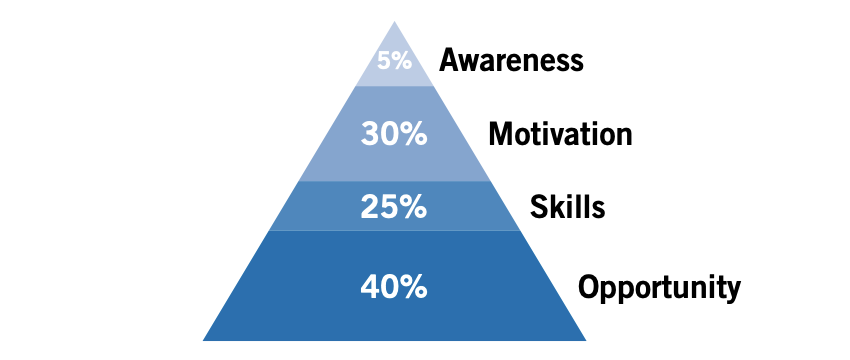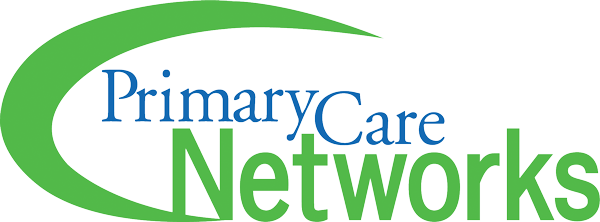Supporting Positive Behaviour Change With The AMSO Model
With a focus on creating long-term positive outcomes, the research-based Alberta Group Programs are backboned by the AMSO Framework, developed by Dr. Michael O’Donnell (2005). Standing for Awareness, Motivation, Skills, and Opportunity, this top-down framework has been developed over the course of 30+ years with a focus on building and maintaining effective healthcare programs.
I sat down with Julia Vallance BScN, program manager with the Red Deer Primary Care Network, to learn how the model’s core methods are incorporated into the seven Group Programs.
After hearing Dr. O’Donnell speak at a health promotion conference, members of the RDPCN team recognized the model’s methods for sustaining behaviour change to be a suitable fit for their new health initiative. Thus, methods to engage and encourage participants using the model’s understanding of Awareness, Skills, Motivation and Opportunity were considered in developing Alberta Group Programs from the ground up.

As we can see from the model, Awareness is the smallest piece of the overall methodology at 5%.
“We know most people know what they ought to do when it comes to taking healthy approaches,” says Vallance.
“When somebody is told to eat better, they understand that a lot of fruit and vegetables will benefit them more than a lot of junk food, but sometimes breaking it down and putting it into practice is a different story. For that, we need to teach people how to implement it in their day-to-day lives and not get hung up on just sharing information.”
In the context of Alberta Group Programs, Awareness means ensuring everyone is on the same page and feels confident accessing course resources.
Next comes Motivation, which comprises 30% of the framework.
“We have to embrace people as whole beings; we have to help them discover their life passions and the link between their passions and health. We then have to help them
develop goals to achieve those passions,” says Dr. O’Donnell (WELCOA, 2014).
In the context of Alberta Group Programs, Vallance explains that Motivation is interlaced throughout, as participants build self-awareness and accountability as they set goals for themselves.
“We ask a lot of questions along the lines of ‘why does this matter to you?’ and ‘what makes you want to make these changes?’ so that we can get them to really break it down in class and build that self-awareness,” she explains.
“Somebody who is attending an Anxiety to Calm class likely knows why they are attending, but what they might not know is how and why that anxiety is affecting them. These are skills we build on, and considerations of ‘what is this anxiety helping me with? What areas do I want to work on?’ and building on that plan for themselves as the weeks go on.”
Vallance explains that while the group-based setting is contributory to the goals of the AMSO model in regard to awareness and skills, the effect of group work on a participant’s motivation is pronounced:
“It’s hard to come to class and say ‘I didn’t try anything,’ and people really keep track of each other and of the goals they set.”
Next comes Skills, comprising 25% of the model. While the skills practiced will look different from program to program, all Alberta Group Programs are based around the AMSO model and are designed to give participants simple but practical strategies that will benefit them for a long time to come.
“The key here is remembering that skill building is more than just why you should change. It also must include the how, when, where, with whom, and the “what ifs.” It’s really about integrating these new changes into one’s life,” states Dr. O’Donnell (WELCOA, 2014).
To this end, Group Programs participants learn a broad range of skills to help them meet their goals:
“On the nutrition side of things, for example, we’ll look at how to determine what a healthy plate looks like at home, or how to read a nutrition label. Skills are built step by step so people really understand, and then have the chance to practice in their home lives,” Vallance explains.
“From an anxiety perspective, that includes skills like mindfulness and meditation, and we have people really engage with the process, checking in and asking them how it feels. Some of these skills that we teach can be hard to engage with, but once you do it, it’s such a relief, knowing you can express yourself and communicate your emotions with others. It does make you feel better.”
Last, forming the base of the AMSO model at 40% is Opportunity. This involves creating spaces for participants to work to build their skills during group activities, while also enabling them to practice and reflect upon what they’ve learned during the following week at home.
Participants do a self-check-in and check-out with the group and plan to make opportunities to practice - later reporting to the larger group how it went. Vallance explains that having a connected support network among the participants of a given program is significant for creating opportunities.
“Say someone struggled with a given activity or found it didn’t work. They get the chance to talk it out and problem-solve with their group, and that continual encouragement to practice these skills is really helpful in habit forming. Change takes time, but the more reliably one can create that opportunity for practice, the more likely it will leave them feeling positive,” she recalls.
“I think about one person we had come to our Happiness Basics class who was really struggling with driving. She had been in a car accident, and was really struggling to sit in the driver’s seat, let alone turn the car on.”
As the class continued, Vallance explains, this participant learned when and where to work in specific mood-boosting skills.
“We had her focus on a combination of calming exercises and reflective thinking. For example, some progressive muscle relaxation before getting in the car, and doing reflective mindfulness once she’s in the driver’s seat. Just making a habit of checking in with herself and getting used to re-engaging in a calm state rather than an elevated state.”
As she began to master these strategies, says Vallance, more of her personality began to shine through in classes:
“As she had previously been reluctant to engage or speak out, slowly we saw her personality shine through. She started to share her story, capitalize on what was going well in her life, and really use those support systems. It was really neat to see.”
Dr. O’Donnell’s AMSO model has been incorporated into each of the seven Alberta Group Programs, making them more engaging for participants and more likely to sustain long-term change. As a result, Vallance says, those who attend should be ready to engage:
“We don’t just talk to you, so be prepared to do more than sit in your seat. But as a result, we see people who continue to practice and hone these skills for six, nine or even more months. We see continual positive outcomes in people’s journeys. The AMSO model is great, and Dr. O’Donnell should be very proud.”
